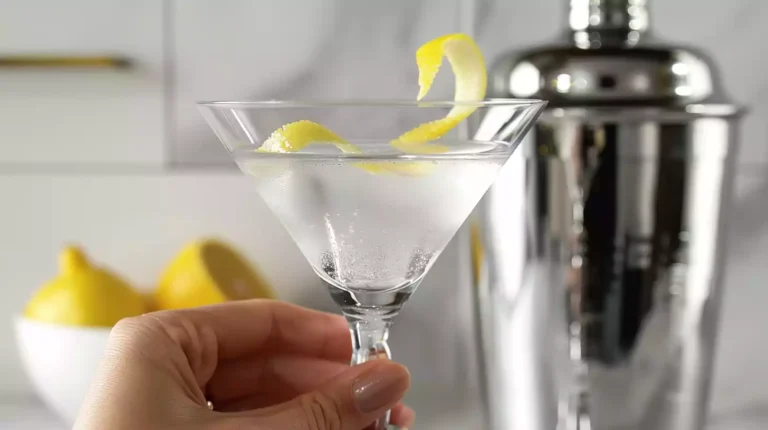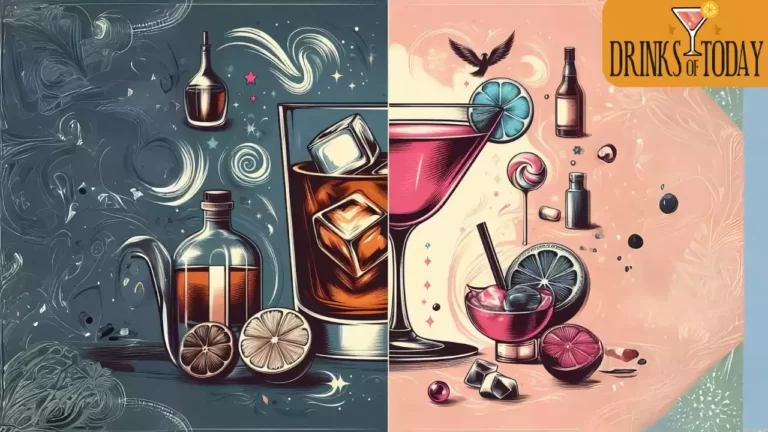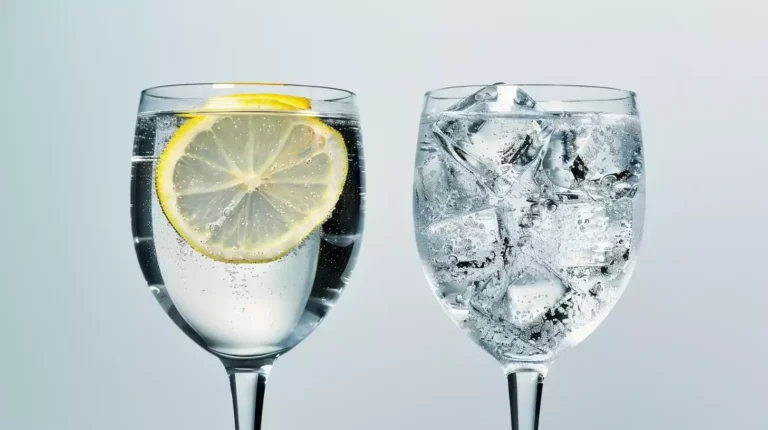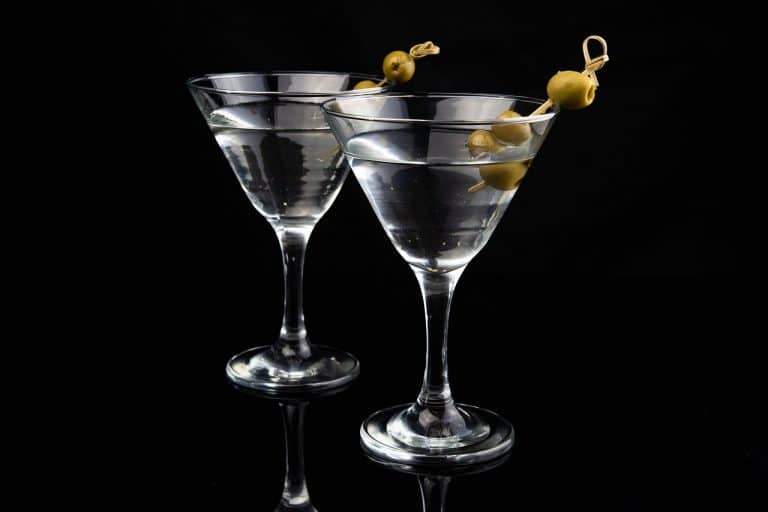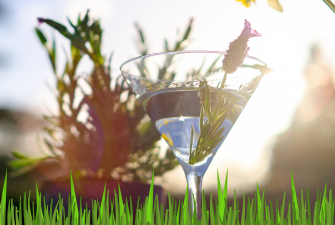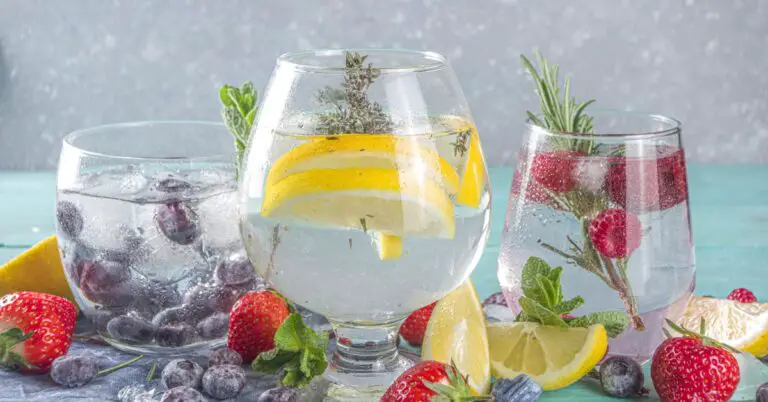How Is Gin Made? The Gin Distillation Process Explained
Gin is easily one of the most consumed alcoholic spirits in the world, sharing the place with whisky and Vodka. The three best-selling gin brands sold a combined amount of 17.4 million liters in 2021, showing how popular gin is worldwide. But how is gin made?
Gin is made in a four-step process, distillation, botanical fusion, dilution, and bottling. Depending on the gin types, there may be other processes. These may include additional distilling, aging, and blending of additives such as coloring or sugar.
This article explores the process of making gin. It starts by looking at how gin as a drink got started before exploring some popular questions about making gin. For example, can you make gin from Vodka, and are gin aged in barrels?
How Did Gin Begin?
Gin began as a medicinal spirit back in 11th-century Italy. The Dutch and Belgians introduced gin to the English in the 17th century.
The English drank so much gin the government had to step in to regulate it. Since then, gin has been spread all over the world by the British Empire and is today one of the most popular spirits worldwide.
Gin could be traced all the way back to the Roman Empire. In fact, the word gin may have originated from the Latin word Juniperus, which means Juniper. The word eventually gets absorbed into local languages such as jenever in Dutch, genièvre in French, and genever in Old English.
However, the earlier proven tradition of making gin-like drinks points to the Benedictine monks in the 11th century in Salerno, Italy. Original gin is distilled for medicinal purposes. By the 17th century, the tradition had spread to many Dutch and Belgian distillers.
It was the Dutch and Belgian version of gin that was introduced to England by Dutch traders. It was drunk alongside brandy. However, gin became immensely popular when the British government imposed a heavy duty on brandy.
This resulted in out-of-control demand for gin, and unlicensed, uncontrolled gin production became rampant. This resulted in the Gin Craze, a period that contributed to the general drunkenness of the population.
The British government introduced the Gin Act of 1736 and 1751 to regulate gin production and sale.
Gin eventually cleaned up its image and became a respectable drink, popular with many. It also spread worldwide with the British Empire and was enjoyed by many across the world as well.
Today, gin is more commonly drunk as a cocktail, mixed with many fruits, juices, or spirits. Some popular cocktails made with gin include Gin and Tonic, Martini, and Negroni.
How Is Gin Made?
Gin is made in four distinct processes – distillation, botanical infusion, dilution, and bottling. Depending on the type of gin, the process may feature some variation. These include differences in distillation, botanicals used, dilution of the spirit, and if the gin is aged.
Gin is hardly a homogenous drink. Similar to many popular spirits worldwide, there are many types of gin, and each comes with its own way of distilling and making it.
However, most gins are generally made using the following four-step process.
Distillation
The first process usually starts with making the base alcohol for gin. The base alcohol forms the base liquid for the gin drink.
Depending on the type of gin, different types of base alcohol are used. However, in many cases, the base alcohol is often made from grains, such as barley, corn, or rye. There is also grain alcohol made from tubers or rice.
These grains are mixed with water and yeast and then heated up. This activates the yeast and ensures they are ready to ferment the sugars inside the grain. This mixture is called a ‘gin mash,’ and they are given time to ferment.
Depending on the distiller, fermentation time may take around 1-2 weeks. During fermentation, the yeast converts the sugar into carbon dioxide, and ethanol, a natural alcohol.
Once fermentation is done, The remaining solids are filtered away, and the remaining liquid is distilled. Distillation removes the impurities and increases the alcohol volume.
Distillation is often done in stills. Depending on the distilleries and the type of gin made, a different type of still is used. Popular types of stills include column, pot, or reflux still.
In many cases, the first 35% distilled liquid is called ‘the heads.’ These are often discarded, as they may contain toxic ingredients such as methanol or acetone. The next 30% are considered ‘the heart,’ the highest quality alcohol.
The remaining alcohol, called ‘the tails,’ may contain impurities. They are usually kept and mixed with the next batch of fermented liquid for further distillation. The alcohol is usually distilled up to 96 to 98% ABV (Alcohol By Volume)
Once completed, the base alcohol should look clear and clean, much like the clear gin you see in bottles. However, they are not ready to be drunk yet and require further processing before you can call them gin.
Botanical Infusion
The next step is botanical infusion, where flavors from selected herbs, fruits, and spices are infused into the base grain alcohol. These combinations of herbs, fruits, and spices are collectively described as ‘botanicals.’
Depending on the distilleries, different types of botanicals may be used. This contributed to how some gin brands may taste different from each other.
However, most gin distillers use juniper berry, which is seen as gin’s most basic botanical element. Aside from juniper berries, the following botanicals are also common in most gins:
- Orange Peel
- Lemon Peel
- Russian Coriander
- Orris Root
- Liquorice Root
- Angelica Root
- Cinnamon Bark
- Cassia Bark
- Cardamom
- Cubeb Berries
- Fennel Seeds
- Coriander
Some types of gin, such as Japanese gin, may use their local botanicals, resulting in a different list of botanicals. Some popular botanicals used in Japanese gin include Sakura flowers, green tea, Sanshu peppers, and Yuzu peel.
There is also American gin, which may use local American botanicals such as Pinyon Pine.
Want to learn more about the differences?
Check out our article on London Dry Gin vs. Japanese Gin
These botanicals are first cleaned before being mixed into the base grain alcohol. Depending on the distilleries, the infusion process may be different.
Some distillers go the traditional route, soaking the whole botanicals into the base alcohol for around 48 hours and then removing it. Brands of gin, such as Beefeater and Monkey 47, are made using this method.
Some distillers use vapor infusion, where the botanicals are hung in a basket above the base alcohol. The base alcohol is then heated. As the alcohol vapors rise, they interact with the botanicals, taking in the flavors.
There is also the vacuum infusion, which uses a vacuum and keeps the base alcohol cold for better flavor extraction. This is a more modern method, which some distillers believe keeps the freshness of the alcohol and botanicals intact in the finished gin.
After the infusion process, the base alcohol usually goes to the still again for re-distillation. This helps to remove any impurities that have found their way into the alcohol.
Again, depending on the gin makers, they may remove, or keep the botanicals with the base alcohol when re-distilling.
At this stage, the alcohol should start to have a gin-like flavor and aroma, although they are not safe to drink, as the alcohol content is too high. It needs to go through the next stage, which is dilution.
Dilution
During the dilution process, the gin is mixed with water to help reduce its alcohol content. Water is generally added slowly, with the distiller monitoring the ABV percentage.
The gin is usually diluted to around 40-45% ABV. During this stage, distillers may also add additional ingredients to the gin. Certain gin types, such as London Dry Gin, may not allow additional ingredients during this stage.
However, some gin types require the addition of ingredients here. For example, sugar may be added during this stage to make Old Tom Gin. Some dry gin also may see colorings added here as well.
At this stage, the gin is ready for consumption. They will now go to the final production stage, bottling.
Bottling
Compared to most other spirits, gin is not aged and stored in barrels for years. Freshly made gin is instead sent for bottling immediately. There may be aged gin, but they are rare and are more done as a way to experiment with flavors.
During bottling, gin makers may use bottles in unique shapes or color hues to enhance the visual appearance of the in. For example, gin bottles such as Bombay Sapphire use a blue-hued bottle to give the gin a blue-colored appearance.
Can Gin Be Made From Vodka?
Gin can be made from Vodka. This is because Vodka has qualities that can make a good base grain alcohol for gin. To make gin out of Vodka, distill the Vodka back to higher alcohol content, infuse the botanicals, and dilute to around 40% ABV (Alcohol By Volume)
Gin is made by infusing a select group of botanicals into a base alcohol. The key to the base alcohol is to ensure that it is neutral in flavor and does not contain impurities.
Vodka actually suits the requirements above. This is because Vodka is also a form of base grain alcohol. The only difference is that it is not infused with any flavor like gin.
Vodka is not the only popular alcohol suitable to be turned into gin. In fact, in Japan, it is common for Japanese gin distillers to use Shochu as base alcohol. Shochu is the local spirit, often made using rice, buckwheat, or sweet potatoes.
To technically turn Vodka or Shochu into gin, you may need to re-distill the Vodka to increase its alcohol content. Once you remove the water from the drink, you steep your botanicals into the concentrated Vodka for up to 48 hours.
Remove the botanicals, and distill the liquid again, to remove any impurities from the liquid. By this time, your Vodka would have smelled like gin since the flavors from the botanicals have been infused into it.
You now dilute the alcohol with water to bring it down to around 40% ABV. At this stage, your Vodka has essentially turned into gin. Enjoy!
Are Gin Aged In Barrels?
Gin is usually not aged in barrels. In fact, gin is rarely aged, often going straight dilution and bottling after being distilled. This is because gin does not need to be aged to develop flavor. The flavor in gin comes from the botanicals during the infusion process.
With many spirits, it is common to see them spend some time aging away in barrels and casks. These spirits include whisky, brandy, mezcal, tequila, and more.
The idea of aging spirits is to allow them some time to develop character, taste, and color. Many of these spirits may spend months to even years quietly aging away in barrels and casks before being taken out, diluted, and then bottled and sold.
Some spirits even spend decades aging away, such as whisky or brandy, to develop full flavors.
However, some spirits do not require aging, as they are either enjoyed with a neutral taste, or they already have flavors imparted differently. Vodka and some Asian spirits, such as Chochu, Soju, or Baijiu, are considered neutral spirits. Gin belongs to the latter.
Gin does not require aging because it already has flavors imparted during the botanicals infusion process. As a result, gin is immediately diluted once distilled and then bottled and sold.
Some gin goes into the aging process in casks, but these are rare. These casked, aged gins are made as a form of reserve or special gin for connoisseurs.
Final Thoughts
From distillation to bottling, there’s a lot that goes into creating the perfect blend of botanicals and alcohol. And while there may be variations in the process depending on the type of gin, one thing is for sure – it’s definitely an art form.
So next time you take a sip of your favorite gin cocktail, take a moment to appreciate all the hard work and craftsmanship that went into creating that delicious drink.

